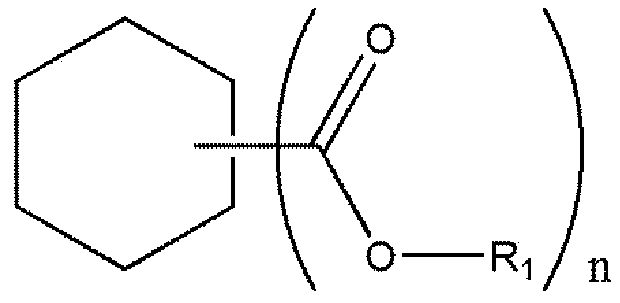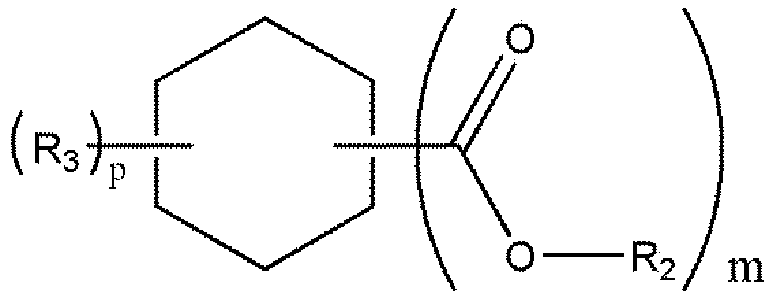Plasticizer composition comprising cyclohexane polyester-based material, and resin composition comprising same
A technology of cyclohexane and composition, applied in the preparation of organic compounds, preparation of carboxylic acid esters, chemical instruments and methods, etc., can solve the problems of poor mobility, increased cost, and no increase in elongation, etc. Achieve the effects of improving thermal stability, simplifying the preparation process, and ensuring environmental friendliness
- Summary
- Abstract
- Description
- Claims
- Application Information
AI Technical Summary
Problems solved by technology
Method used
Image
Examples
preparation example Construction
[0125] The above-mentioned combination can be obtained as a combination of interrelated substances as a product of a production method to be described below, but the possibility of a combination different from the above-mentioned combination is not excluded.
[0126] The plasticizer composition according to one embodiment of the present invention may further contain an aromatic polyester-based substance, which may have come from unreacted substances in the hydrogenation of the raw material. In this case, the content of the aromatic polyester is preferably 0.5% by weight or more relative to the total weight of the plasticizer composition, and preferably, the aromatic polyester does not exceed the weight of the plasticizer composition. 15% by weight of the total weight. When the content of the aromatic polyester is within the above range, the plasticizing efficiency, processability, melting ability, etc. are excellent, and the preparation process can be simplified due to mild hy...
Embodiment 1-1
[0171]A predetermined volume of silica-supported palladium catalyst was charged in a 1.5 L pressure vessel equipped with a stirrer, 25 g of terephthalic acid and 1 L of water as reactants were added and stirred while hydrogen gas was fed using a mass flow meter. While raising the temperature inside the reaction vessel to 200° C. and maintaining the internal hydrogen pressure at 80 bar, the mixture was reacted for one hour. After the reaction was completed, the reaction product in the reaction vessel was recovered and purified using methanol. Thereafter, esterification was performed using 300 mol % of 2-ethylhexanol in the presence of a Ti-based catalyst relative to the hydrogenated product, followed by purification to obtain an ester product in the form of a composition.
Embodiment 1-2
[0173] A predetermined volume of silica-supported palladium catalyst was charged in a 1.5 L pressure vessel equipped with a stirrer, 25 g of terephthalic acid and 1 L of water as reactants were added and stirred while hydrogen gas was fed using a mass flow meter. While raising the temperature inside the reaction vessel to 230° C. and maintaining the internal hydrogen pressure at 80 bar, the mixture was allowed to react for one hour. After the reaction was completed, the reaction product in the reaction vessel was recovered and purified using methanol. Thereafter, esterification was performed using 300 mol % of 2-ethylhexanol in the presence of a Ti-based catalyst relative to the hydrogenated product, followed by purification to obtain an ester product in the form of a composition.
PUM
 Login to View More
Login to View More Abstract
Description
Claims
Application Information
 Login to View More
Login to View More - R&D
- Intellectual Property
- Life Sciences
- Materials
- Tech Scout
- Unparalleled Data Quality
- Higher Quality Content
- 60% Fewer Hallucinations
Browse by: Latest US Patents, China's latest patents, Technical Efficacy Thesaurus, Application Domain, Technology Topic, Popular Technical Reports.
© 2025 PatSnap. All rights reserved.Legal|Privacy policy|Modern Slavery Act Transparency Statement|Sitemap|About US| Contact US: help@patsnap.com



